How do we determine which handwashing practices to promote in humanitarian settings?
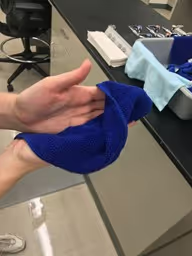
After researching the efficacy of different handwashing methods, Prof. Marlene Wolfe, Prof. Alexandria Boehm, and Claire Anderson reflect on approaches to evaluating different handwashing methods for use in humanitarian settings…
The COVID-19 pandemic prompted an urgent need for research to determine the best interventions to respond to the pandemic and reduce disease spread, particularly among already vulnerable people. Elrha’s Humanitarian Innovation Fund (HIF) supported our work to evaluate one non-pharmaceutical intervention: handwashing.
Handwashing with soap and water is a well-established intervention, and has been proven to reduce both pathogen concentration on hands and the incidence rate of many diseases, including respiratory diseases like COVID-19. Despite this, less than 25% of people in low- and middle-income regions wash their hands with soap and water after contact with excreta, possibly due to a lack of resources. Limited resources are also a challenge among people experiencing homelessness, refugees and internally displaced people, and in remote areas. Therefore, providing resources that can easily be used correctly and consistently, even in times of crisis, is an important part of emergency response.
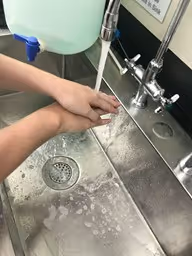
Handwashing with soap and water is recommended by the World Health Organization (WHO), but when this is not achievable, alternative techniques must be considered. Alcohol-based hand sanitizer (ABHS) is often recommended for use when hands are not soiled, and other alternatives include use of water only, soapy water, and antimicrobial towels. It’s also important to note that even when soap and water is available, it may not be used for the full 40 seconds recommended with the WHO or 20 seconds recommended by the United States Centers for Disease Control and Prevention (CDC). The efficacy of these alternatives has been under-studied, and there is little evidence to guide the appropriate use of different handwashing methods for an outbreak of a viral pathogen like SARS-CoV-2.
Particularly when responding to a crisis, it is important to verify that interventions are likely to be effective before they are used in the field. We used a laboratory-based study to evaluate the efficacy of a wide variety of handwashing alternatives against viruses by determining the ability of each method to remove and inactivate surrogate viruses. Two viruses (one enveloped virus and one non-enveloped virus) which do not infect humans were used to serve as models of pathogenic viruses. Volunteers joined us in the laboratory and performed recommended and alternative handwashing methods after viruses had been applied to their hands. The remaining viruses were recovered and compared to the initial amount to determine the reduction in viruses due to handwashing.
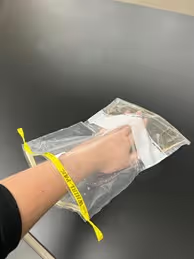
We tested a wide range of methods, including alcohol-based hand sanitizer (ABHS), washing with a tank of soapy water for 20 seconds, washing with soap and water for a short time (5 seconds), washing with water only for 20 seconds, washing with an untreated microfiber towel, and washing with the Supertowel. The Supertowel is an antimicrobial microfiber towel, designed to be reused and to serve as a handwashing alternative in low-resource settings. The Supertowel creation was funded by the HIF, and previous studies have shown that it can be as effective as handwashing with soap and water for 20 seconds for bacteria. Particularly in response to the COVID-19 pandemic, evaluating this intervention and others for viruses was an important goal.
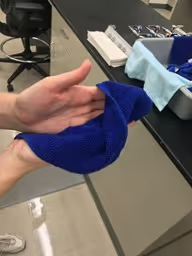
We found that several alternatives were as efficacious as washing with soap and water for 20 seconds. Alternatives that were similar to washing with soap and water for 20 seconds include: washing with soapy water (effective for both viruses studied), washing with water only (effective for both viruses studied), washing with soap and water for 5 seconds (effective for the enveloped virus studied), and using ABHS (effective for the enveloped virus studied). Use of a towel (either a regular microfiber towel or the Supertowel) was not consistently effective at removing the viruses, suggesting it is likely not an efficacious tool for pathogen removal for viruses. These findings are different from results showing that the Supertowel is efficacious for bacteria, emphasizing that a handwashing alternative may not be effective for all pathogen types. As a result, it is important to consider the outbreak pathogen type when choosing a handwashing alternative.This study is the first step in ensuring that handwashing promoted in humanitarian crises is effective and appropriate to both prevent disease transmission and promote dignity. This study provides a valuable foundation for continued work to evaluate all aspects of consistent and correct use that make a handwashing intervention successful, including:
1. An alternative handwashing method should be effective against pathogens
There are several large groups of human pathogens that exist, such as bacteria (like enterotoxigenic Escherichia coli), non-enveloped viruses (like norovirus), and enveloped viruses (like SARS-CoV-2). Some alternative handwashing techniques may only be effective against a certain group of pathogens. Currently, there is little data on the efficacy of alternative handwashing techniques, particularly against viruses. This study fills this gap for several important handwashing alternatives and viruses.
2. An alternative handwashing method should be consistently accessible
Moving beyond the laboratory, the cost, refill needs, availability in low-resource markets, transport costs, needed infrastructure, potential for misuse, and security are all important accessibility issues to evaluate. Methods should be accessible for consistent use at all critical handwashing times.
3. An alternative handwashing method should be correctly used by the community
Handwashing methods should be correctly used to be most effective, and further information about “incorrect” uses that are still effective (as this study addresses in evaluating reduced handwashing time) is important for handwashing promotion efforts. Further work can also evaluate how methods are used in the field so that a full range of realistic uses can be evaluated.The results from this study can be included alongside other existing research to form recommendations, and can serve as the basis for future field studies. Future field research may involve both further evaluation of alternatives that have been shown to be effective in the laboratory setting in a real world context, and may also involve observation of further realistic handwashing alternatives which could again be evaluated in the laboratory. These studies should focus on a variety of pathogen types and with a wide variety of alternatives (including those which are relatively unstudied in the laboratory, such as washing with sand or ash). Close feedback between laboratory and field studies will enable the development of more effective handwashing interventions for people in crisis and our study provides new evidence to continue that cycle.
Disclaimer: This blog post is a research summary, for full methods and results please contact corresponding author Marlene K. Wolfe ([email protected])
Stay updated
Sign up for our newsletter to receive regular updates on resources, news, and insights like this. Don’t miss out on important information that can help you stay informed and engaged.
Related articles


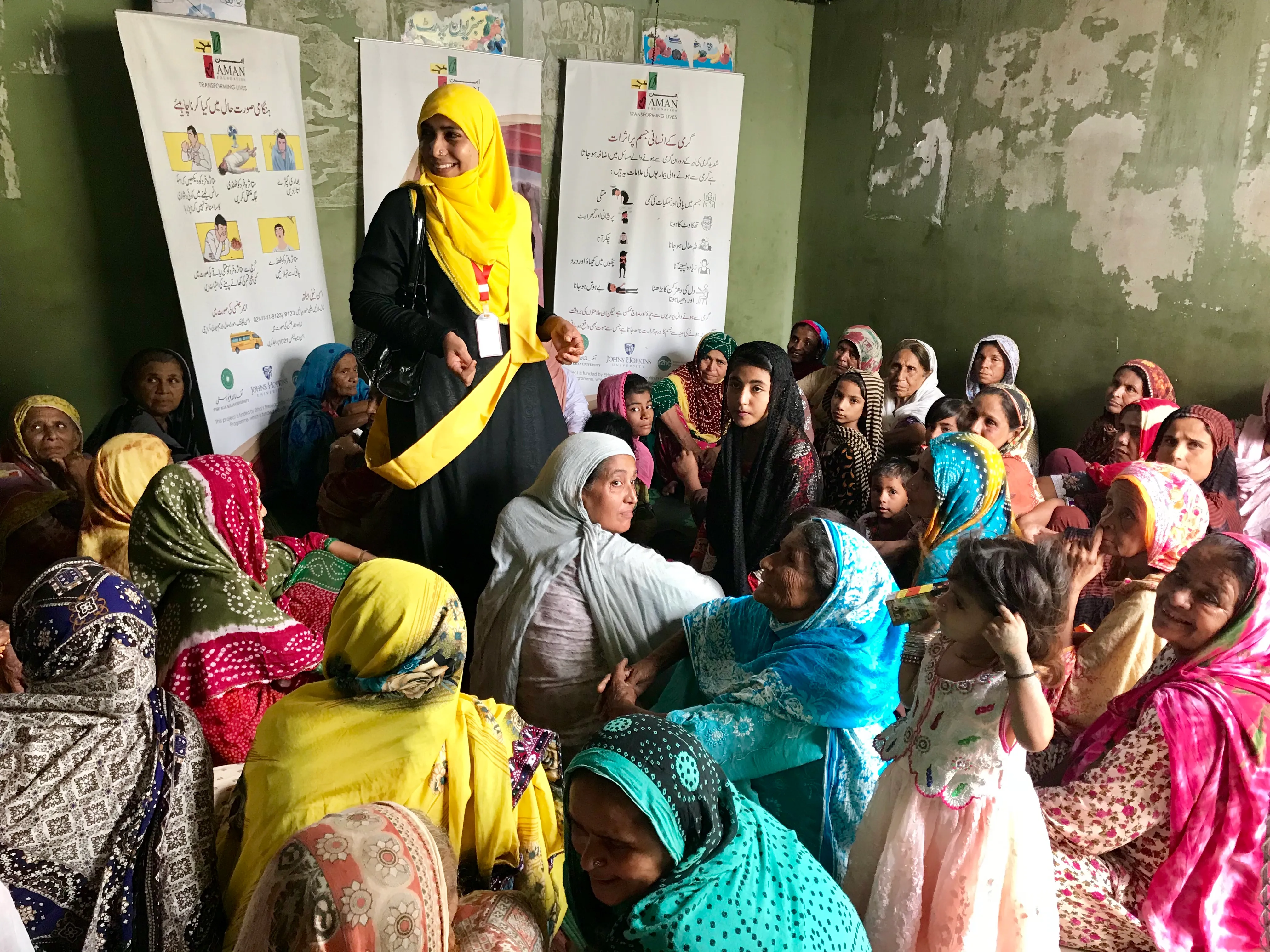
Explore Elrha
Learn more about our mission, the organisations we support, and the resources we provide to drive research and innovation in humanitarian response.